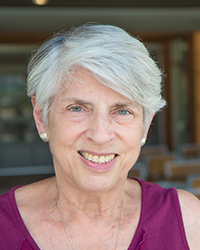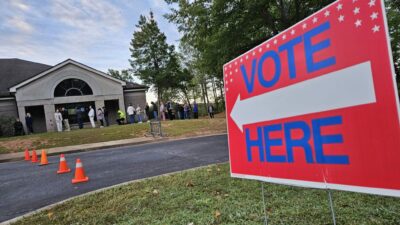During a recent visit to West Virginia, Dr. Rahul Gupta, the head of the federal Office of National Drug Control Policy, reflected on recent successes in efforts to slow the ongoing drug and overdose epidemic.

Nationally, fatal drug overdose rates have dropped 5% since a 2021 spike. Naloxone, the opioid reversal drug, is widely available. Drug test strips are being utilized more and more. There are more tools and funding opportunities available through the federal government than ever before for critical harm reduction efforts, including syringe service programs, disease screenings and more.
But in West Virginia, which is often referred to as ground zero for the overdose epidemic in America, not all of these successes have taken hold.
While naloxone distribution is increasing in the state and region, fatal overdose rates are still double the national average in West Virginia. Test strips to help detect fentanyl and xylazine have been removed from the state’s definition of drug paraphernalia, but still more than 80% of fatal overdoses reported in 2023 involved fentanyl, a 3% increase from 2022. And both on the state and local levels, laws prohibit the existence of low barrier, needs-based syringe service programs, barring the state from accessing critical funding for programs known to decrease the spread of illnesses like HIV and hepatitis C while increasing the likelihood that drug users enter recovery safely.
Gupta, who served as the State Health Officer from 2015 to 2018 after leading the Kanawha-Charleston Health Department, is well aware of the struggles facing the Mountain State. When asked whether he believed West Virginia was appropriately situated to confront these challenges, he said he believed there was “immense opportunity” to see improvements.
“I think there are a number of things that can be done. That is the hope and that is the opportunity that the state has,” Gupta said. “West Virginia has an immense opportunity to act in ways that are evidence-based and data-driven to be able to save even more lives and do more.” But, as state leaders continue to work against evidence-based and data-driven approaches to the drug epidemic, how can the state take hold of that opportunity?
Understanding what works and what we don’t know
In 2021, the Centers for Disease Control and Prevention dubbed Kanawha County the “most concerning HIV outbreak” in the nation among people who inject drugs. That year, 56 new cases of HIV were detected in the county, accounting for more than a third of those detected statewide. All but 10 of those cases were tied to intravenous drug use.
Three years before, the Kanawha-Charleston Health Department — under scrutiny from the state health department and Gupta — shuttered its syringe service program. The program had become the focus of community tensions, which were politicized in a contentious election year. It never reopened.
Dr. Judith Feinberg, a professor of medicine and infectious diseases at the West Virginia University School of Medicine, said the program’s closure had a direct correlation with the uptick in HIV cases that came to the county and surrounding region in the years following.
“That outbreak happened as a consequence of closing the [KCHD] syringe service program. Politics took over health care in such a disappointing way. There’s no way to deny it,” Feinberg said. “We need a different attitude. It’s not all on the backs of the people with substance use disorder to fix things. We as a society need to pay attention and do what’s right. Sadly, I don’t see that happening in a big hurry here.”

Two months after the CDC presented its findings to Charleston city leaders regarding the HIV outbreak in 2021, the state Legislature responded by passing a law that banned the operation of low-barrier, needs-based syringe service programs. Those programs, according to a body of evidence dating back decades, are the most effective at limiting the spread of diseases among people who use drugs, decreasing needle litter and connecting people to recovery and support services, among many other things.
Feinberg was invited to the Legislature, where she testified about the bill and shared facts about the importance of syringe service programs, as well as the risks that could come with limiting them.
“That was terrible. Oh my God,” Feinberg said. “We spent so much energy talking to those folks and going down to Charleston and testifying in those committees. Telling them what we knew as experts and getting ignored.”
In the years after the bill’s passage — it went into effect in July 2021 — the number of syringe service programs in the state was cut in half, from 16 to eight. Today, all those that do operate require syringes to be returned before clients can receive clean ones as well as identification, two well-studied barriers that are known to keep some of the most vulnerable individuals from using the services.
“So here we are, with half the number of services in the state with the highest risk of fatal drug overdose and we’re making it more difficult to run programs we know would work,” Feinberg said.
According to state data, the prohibition on low-barrier syringe service programs has not led to an increase in the number of HIV diagnoses in Kanawha and Cabell counties, which were hotspots for spread of the virus.
But that data, Feinberg said, should be considered with caution.
There is little information on how many HIV tests are being given in West Virginia and who is receiving them. Care providers have lamented for years that testing isn’t occurring as much as it used to among high-risk populations, which would lead to fewer cases of HIV being detected but not fewer cases existing. That comes, at least in part, because of the closure of syringe service programs, which are crucial to both performing screenings and building trust between people who use drugs and those who run services and screenings for them.
Feinberg said that while there hasn’t been a dramatic increase in HIV cases, cases are being detected more and more in small numbers across the state. To protect identities, the state suppresses case counts in counties where fewer than five cases of HIV or any disease are detected.
“Not just five years ago, but 10, 15, 20 years ago these places reported zero cases,” Feinberg said. “The issue that we need to pay attention to is that if you can identify two, three or four cases in a small community, there’s probably more than that in your community. We’re just not finding them.”
Losing connections and trust
At a roundtable with Gupta last month, community leaders from organizations across West Virginia shared successes as well as struggles that they’re facing when it comes to services for people who use drugs as well as those in recovery.
A thread through the entire conversation were challenges in building trust and keeping people involved in the systems that could support them.
Kanawha County Circuit Court Judge Jennifer Bailey said it’s common for people brought before her in court, often for drug charges, to disappear after their first hearing.
“What I see is that we are losing contact,” Bailey said. “We see them now, and then they’ll be back three or four years later and by that time, they’re in more trouble. Their [parental] rights are gone.”
Beverly Sharp, the executive director for the nonprofit REACH Initiative, said while a focus on recovery in recent years has been much needed, there now exists “a cliff for people to fall off of with reentry” into a community after completing recovery programs or being released from incarceration.
Stephanne Thornton, a criminal justice specialist for the Public Defender Service’s Public Defender Corporation, said something is lost when people with substance use disorder are discharged from jails with referrals for treatment services.
“[It’s difficult] making sure that [a] referral is not only made but is completed and the person is getting to the location for [medically assisted treatment] or other substance use disorder treatment,” Thornton said. “It’s that second part that we’re lacking right now … Making sure that someone is following through on an individual is a barrier. A referral alone does not link someone to the treatment they need.”
These all compound with challenges that service providers have lamented for years: a lack of transportation to treatment and recovery services, not enough recovery beds for people who need them, limits on medically assisted treatment options and few housing options for people who use drugs as well as those in recovery, to name a few.
For Iris Sidikman, the program coordinator for the harm reduction program at the West Virginia Women’s Health Center, building trust starts with an open, nonjudgmental dialogue with the people they serve.
“I think it really comes back to meeting people where they are physically, emotionally, mentally,” Sidikman said. “It’s about coming into situations with an open mind and letting people tell us what they need, then really listening to what they say.”
But, in today’s environment, that’s been difficult. In 2023, after seeing and hearing the need for more syringe services in Kanawha County — according to documents from the state, West Virginia Health Right, the only legal syringe service program in the county, distributes less than 1% of the syringes given in Cabell and Monongalia counties — the Women’s Health Center attempted to open their own program.
But politics and stigma — the same that shuttered a grassroots street medicine initiative from Solutions Oriented Addiction Response in 2021 — got in the way. Charleston City Council denied their request. Now the harm reduction program is up and running, though without syringes.
Feinberg said the lack of trust and difficulties building connections are nothing new. She’s witnessed them throughout her career and seen the fallout from the “war on drugs” on people who use them, which continues today. She said it would take a major societal shift for these challenges to be solved
That reality has left her feeling pessimistic about progress in efforts to help people who use drugs, especially in a state where lawmakers are so hostile against people with substance use disorder. At that root of it all, she said, is stigma.
“It’s going to take an enormous social and political effort to change the way we deal with these things,” Feinberg said. “I will tell you that I don’t think West Virginia is prepared to do that.”
But still, the work doesn’t stop. At the Women’s Health Center, Sidikman and their colleagues are finding whatever ways they can to connect with people who use drugs and get them the resources they need to stay healthy and alive.
“At their best, harm reduction programs can be a hub to build trust with people and provide them with all kinds of resources,” Sidikman said. “That includes housing, where to get food, how to go about getting documentation. That’s what we do here.”
And Feinberg is working on a project to increase screening and education for workers at Federally Qualified Health Centers throughout the state who treat and see people who use drugs.
“What we need is compassion and empathy, and it’s sad to me that there are so many people out there — some of them writing our laws — who don’t have that for people who are already struggling, who are living really tough lives,” Feinberg said. “Why is anyone working to make life harder for people? It’s going to take a long time, but we need to change the way we view [substance use disorder] and the people living with it.”







